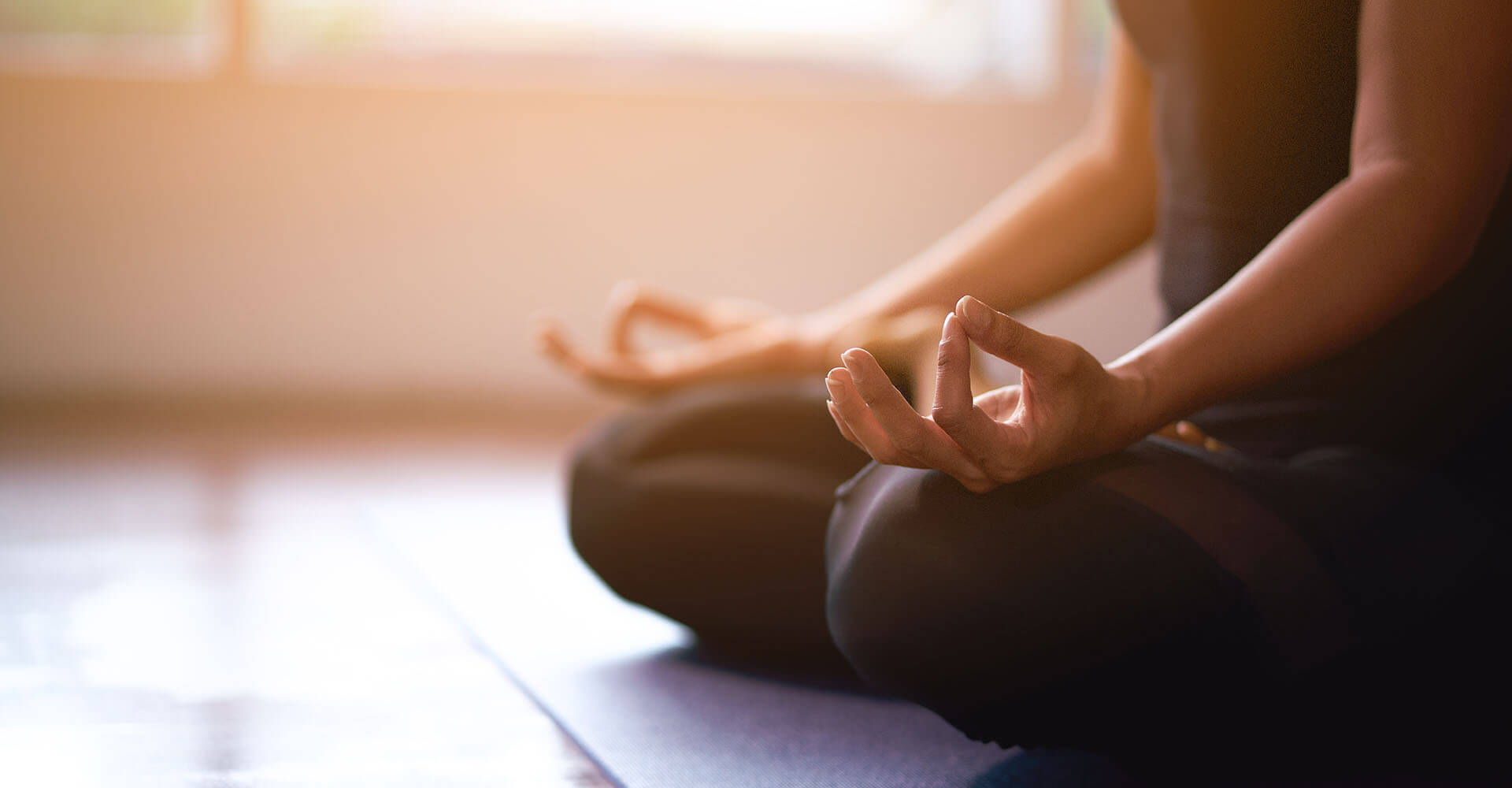
Relaxation techniques for a more balanced daily routine
Are you always on the go, feeling like you have to deliver all the time? Are you burdened by worries that keep running through your head, arguments with friends or family? Often, these problems prevent you from winding down and enjoying the moment. In the long run, this puts a strain on both your body and your psyche. Therefore, take the time to actively relax. A variety of different relaxation techniques can help you do this. In this article, we present some of them and explain what they are good for.
This is what effective relaxation techniques bring
Stress manifests itself in many different ways: Perhaps you’ve noticed that you’ve been reacting irritably more often lately, without there being a real reason for it. However, relaxation techniques can also help you to relieve pain or to keep your cool in exam situations. Relaxation techniques can be very individual. Often you don’t even have to do anything special, but can simply occupy yourself with things you like to do. For example, if you like to read, immersing yourself in a story can be as relaxing for you as a spa trip is for others. Your favorite sport can also help you to simply switch off. In other cases, active relaxation techniques are the best remedy for your tension. Depending on your character and the situation you are in, meditation, breathing exercises or progressive muscle relaxation, for example, can have a positive effect on your body and mind and prevent muscle cramps or headaches. Next, we’ll show you which relaxation techniques are useful in which cases.
A relaxation techniques overview – which exercises will help you?
Relaxation techniques for stress
When you’re under stress, your breathing becomes shallower. In acute cases or when it is particularly bad, you may even notice how your breath goes faster, but at the same time you do not inhale as much air. In stressful situations, abdominal breathing as a relaxation technique can help you to calm your breath and thus your thoughts. To do this, place one hand on your chest, just below your collarbones, and the other on your belly. Close your eyes so you can better focus on your breathing. Take time to observe your breathing. If you feel your chest rising and falling faster than your belly, consciously try to switch to deeper belly breathing. Breathe with the sensation of your air coming into your belly. This way, your lungs will be better ventilated again, your body will get more oxygen, and you will relax again. Like most relaxation techniques, abdominal breathing is especially effective if you do it not only in acute moments of stress, but also as a preventive measure several times a day. If you find it difficult to do belly breathing while standing, you can also lie down on your back.
Relaxation techniques for falling asleep
You will notice how important restful sleep is, especially when you don’t have it. Pain or stress cause about 30% of Germans to have problems falling asleep and staying asleep. It can help if you go on a mental journey before bedtime. Imagine you are taking a walk through the forest and concentrate especially on the sensory impressions you encounter. Paint the bright colors of leaves, forest floor or a flower meadow in front of your eyes, listen to the wind in the trees and the chirping birds, imagine the smell of moss and earth. With these or similar images in your mind, falling asleep will be easier. You can find more relaxation techniques to help you organize your thoughts and calm down before going to bed here.
Relaxation techniques for pain
If you suffer from frequent pain, it may be because you have adopted the wrong posture. For example, if you work at your desk all day long and forget to pay attention to your posture, this can quickly lead to tension. Also, when you’re under stress or anxious, your muscles tense up, as doctor Edmund Jacobson discovered. You pull your shoulders up, your neck muscles stiffen, and you may even clench your teeth tightly. This causes pain that often stays with you for days. Jacobson therefore developed exercises for progressive muscle relaxation. You tense one muscle for about 10 seconds at a time and then consciously relax it for about 20 to 30 seconds. Close your eyes while doing this so that you can concentrate better on how your body reacts. In progressive muscle relaxation, it is important that you continue to breathe evenly during both the tension and relaxation phases. If you hold your breath when your muscles are tense, you will only tense up more and the pain will increase. After you have tensed and relaxed each muscle group in turn, finish your exercises by opening your eyes again, taking a few deep breaths and stretching in all directions. Progressive muscle relaxation is best done twice a day.
Are there special relaxating techniques for children?
Relaxating techniques for young children
Even the youngest children often suffer from stress or anxiety. Especially when caregivers are under pressure, they feel it immediately, even if you try hard to cover up tension. Younger children in particular cannot yet express stress and anxiety, which is why they often suffer from insomnia, are tearful or clingy when under psychological pressure. Playful relaxation techniques help young children to relax. Quiet music and a relaxing story help them fall asleep. Especially at preschool age, the caregiver is especially important to help children feel safe and reduce anxiety. Therefore, consciously spend time together in which you focus entirely on your child and pay attention to how he or she is doing at the moment.
Relaxating techniques for fidgety children
It’s way past bedtime, but your child is still jumping around the house like a bouncy ball? Because calming down is an impossibility, it helps to play a game in which your child really lets off steam. For example, with “Shake a tree,” the child jumps on the spot for a minute. Arms and shoulders must be loose, so that the arms swing back and forth. Then he circles his arms from back to front for 30 seconds and then from front to back again. Then it bounces and swings the arms again for one minute. This is followed by one minute of standing still and slowly circling the head from left to right and back again. Another minute of bouncing, and then off to the springs. Your child will be even more motivated if you bounce around with them!
Relaxation techniques for school children
Stress at school, with family, or with friends can get to school kids, too. Just like adults, they can become irritable, lose their appetite, and suffer from physical problems such as tension and headaches. Older children in particular often benefit from relaxation techniques similar to those used by adults. That’s why you can do these exercises together with your child. Make sure that your child’s daily routine does not include too few relaxation phases. Having to rush from one appointment to the next means that your child has no time to switch off and reflect.
Let perfectionism go
When they start school, the pressure to perform also begins for many children. Sure, you want your child to get good grades and get along otherwise. But when you realize that your family’s daily routine is all about making sure your child gets top grades in class, that their room is super neat, and that you generally present a good image, stress is inevitable. If your child then also resists this, the tension in the family, and especially in your child, quickly builds up. That’s why the relationship between you and your child should always be more important than good performance. Do nice things together and talk openly about it when you are under stress, suffering from anxiety or have other worries. Even if something is bothering you, it is important to talk about it with your child. Children sense your tension and also worry or, in the worst case, think that they themselves are the problem.










